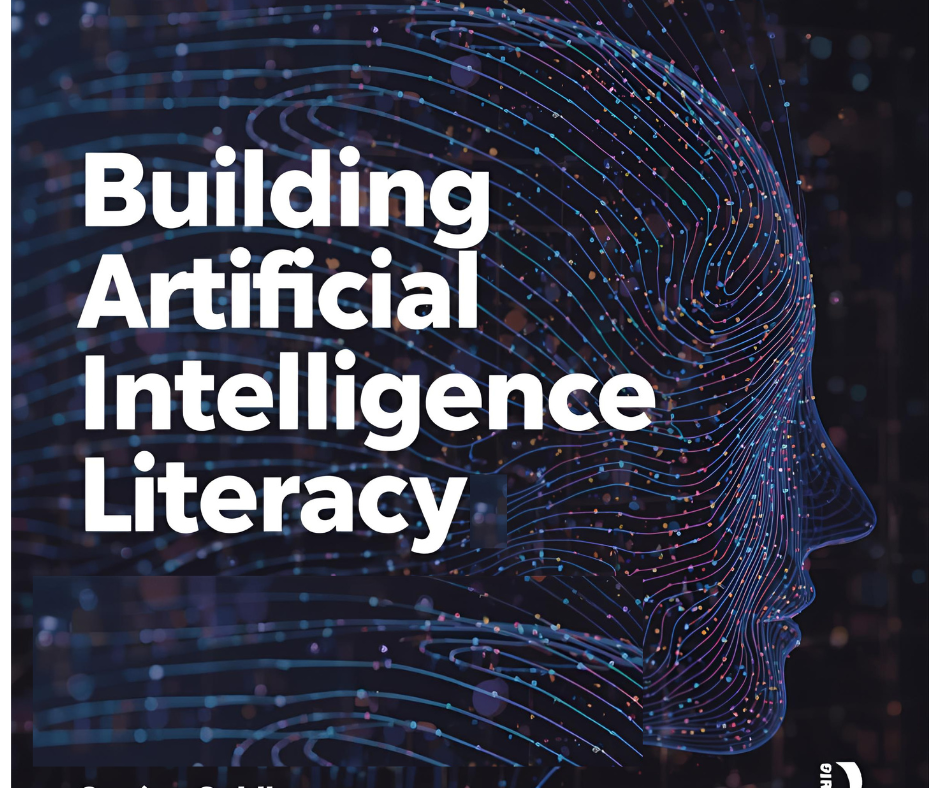A critical competency in our modern society, influencing various aspects of everyday life (Ali & Richardson, 2025). Understanding AI literacy is vital not only in academic settings but also in personal experiences, business operations, and workplace environments. This brief discussion aims to explore the concept of AI literacy, its different levels, its significance for individuals, the competencies associated with being AI-literate, and the essential components that make up AI literacy.
AI literacy can be defined as “a set of competencies that enables individuals to critically evaluate AI technologies; communicate and collaborate effectively with AI; and utilize AI as a tool in various spheres of life, including online activities, domestic settings, and professional environments” (Long & Magerko, 2020). This definition encapsulates the various dimensions of interaction that individuals have with AI tools, highlighting the necessity for a nuanced understanding of technology in today’s world.
As Dr. Muhammad Yousuf Ali emphasizes, “AI literacy empowers us to understand how to use AI tools in an effective manner, making our daily tasks more accessible and feasible.” Given the pervasive presence of AI in daily life—spanning everything from smart devices and autonomous vehicles to advancements in healthcare, business strategies, educational methodologies, and travel logistics—becoming AI literate is now more important than ever for every individual.
Why is AI literacy important for us
Acquiring AI literacy equips users with the knowledge and skills needed to make informed decisions in an increasingly AI-driven landscape. It allows individuals to approach AI technologies with a critical mindset, fostering the ability to discern reliable information from potentially misleading outputs. This critical assessment is particularly important, as it mitigates risks such as blind trust in AI-generated results and the potential misuse of generative AI technologies.
Furthermore, AI literacy prepares individuals for future career opportunities and enhances their decision-making capabilities within the digital economy. By understanding how to operate and engage with AI, people can navigate their professional landscapes more effectively and ethically. Additionally, promoting AI literacy encourages ethical thinking and responsible digital citizenship, ensuring that individuals are aware of the implications of AI technologies on society and the ethical frameworks that should guide their use.

Levels of AI Literacy
AI literacy can be categorized into four distinct levels, each building on the previous one to enhance understanding and utilization of artificial intelligence.
Level 1: Awareness / Basic Understanding
The primary goal at this level is to grasp what AI is and identify its presence in everyday life. Key competencies include:
– Recognizing AI applications such as virtual assistants and recommendation systems.
– Familiarity with fundamental terminology, including concepts like algorithms, machine learning, and data.
– Understanding the basic premise that AI systems function through data-driven processes.
Level 2: Functional / Application
At this level, the focus shifts to effectively using AI tools. Essential competencies involve:
– Interacting with various AI systems, such as ChatGPT or image recognition applications.
– Applying AI tools within educational, research, or workplace settings.
– Critically evaluating AI outputs, which includes recognizing limitations, potential errors, and biases inherent in the technology.
Level 3: Analytical / Critical Thinking
This level emphasizes the ability to analyze AI’s workings and its broader societal implications. Key competencies include:
– Understanding the basic mechanics behind how algorithms learn and evolve.
– Identifying and detecting biases present in AI models and the data they are trained on.
– Examining ethical considerations related to AI such as privacy, surveillance, and discrimination.
– Grasping the concept of algorithmic accountability and its importance in AI deployment.
Level 4: Creative / Ethical Development
The ultimate goal at this level is to design, modify, or guide AI systems in an ethical manner. Competencies essential at this level comprise:
– Creating or customizing simple AI models and workflows to meet specific needs.
– Engaging in meaningful discussions regarding the responsible use and development of AI technologies.
– Applying ethical frameworks in the use or recommendation of AI tools to ensure fairness and inclusivity.
– Advocating for the design of AI systems that prioritize equity and ethical considerations.
Each level of AI literacy contributes to a comprehensive understanding of both the technology and its implications, empowering individuals to navigate and shape the future of AI responsibly.
Key Components of AI Literacy
AI literacy consists of seven essential components:
1. AI Awareness
This involves understanding what artificial intelligence (AI) is and how it functions at a fundamental level. It includes recognizing examples of AI in everyday life.
2. Data Literacy
This means knowing how data is collected, used, and interpreted by AI systems. It encompasses understanding concepts such as data privacy, bias, and data quality.
3. Algorithmic Thinking
This component focuses on grasping how algorithms make decisions. It includes understanding key concepts like machine learning, pattern recognition, and automation.
4. Critical Evaluation
This entails the ability to question and evaluate the outputs generated by AI. It involves identifying potential biases, misinformation, or ethical concerns.
5. Ethical and Social Understanding
This involves recognizing the societal impacts of AI, such as issues related to privacy, fairness, and accountability. It emphasizes the importance of responsible development and use of AI technologies.
6. Practical AI Use
This includes using AI tools (e.g., ChatGPT, image generators, recommendation systems) for work, study, or everyday tasks while being aware of their limitations.
7. Collaboration and Communication
This entails the ability to clearly explain AI concepts to others and collaborate across disciplines to solve AI-related problems.
Key Points on Developing AI Literacy in Technology Students
1.Importance of AI Literacy:
i. Essential for preparing a workforce that can engage critically with AI and its societal implications.
ii. Involves the ability to recognize, use, evaluate, and develop AI systems, combining technical skills with ethical awareness.
2.Current Challenges:
i. Many AI literacy initiatives are research-based pilot programs that lack scalability and formal curriculum integration.
3. Successful Initiatives:
i. Address learners’ contextual needs by applying AI models to real-world problems.
ii. Promote interdisciplinary collaboration among students.
4. Effective Development Framework:
i. Inquiry-based pedagogical framework enhances learning.
ii. Courses focused on technology ethics and design thinking.
5. Learning Techniques:
i. Role-play activities and case discussions simulate real-world AI dilemmas.
ii. Encourages exploration of diverse perspectives and evaluation of ethical and societal consequences.
6. Community of Inquiry (CoI):
i. Students collaboratively build understanding.
ii. Enhances technical skills along with critical thinking, problem-solving, and communication abilities.
8. Analytical Tools:
i. Epistemic Network Analysis (ENA) is used to map connections between students’ ideas and ethical reasoning.
9. Overall Learning Environment:
i. Encourages collaboration, reflection, and ethical reasoning.
ii. Equips students with essential competencies and fosters a mindset attuned to the social and ethical dimensions of technology.
10. Outcome:
i. Prepares students to be responsible innovators in an AI-driven world.
In summary, the multifaceted components of AI literacy are essential for empowering individuals in a world increasingly shaped by artificial intelligence. Developing these competencies not only enhances personal and professional capabilities but also fosters a more informed and responsible society.



